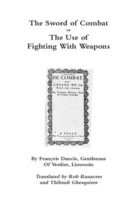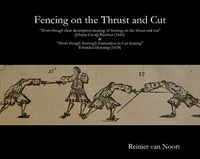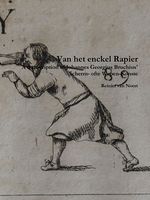|
|
You are not currently logged in. Are you accessing the unsecure (http) portal? Click here to switch to the secure portal. |
Lulu booklist
| Fencing on the Thrust and Cut by Reinier van Noort Johann Georg Paschen (1628-1678) was a fencing master and prolific author in the 17th century, producing numerous treatises on for example fencing, fighting with the pike, and vaulting. Not much is known about Erhardus Henning, who published a small treatise on Cut-fencing in Königsberg in 1658. This book contains both these treatises, translated into English by Reinier van Noort, founder of the School voor Historische Schermkunsten in the Netherlands. In addition, photographs of the plates of Paschen are included with the text. |
| Transcription of Bruchius' Scherm- ofte Wapen-Konste by Reinier van Noort This is a full transcription of the Rapier fencing treatise written in Dutch by Johannes Georgius Bruchius, and published in Leiden in 1671. Additionally, this book contains black and white photo reproductions of all the plates contained in the original book. |
 |
The Sword of Combat or The Use of Fighting With Weapons by Rob Runacres, Thibault Ghesquiere Paperback - eBook In the 17th century Italy was the place to learn the art of the sword. Travellers visited training salles and across Europe Italian works on fencing were translated and Italian schools sprang up. France was no exception. Francois Dancie’s 1623 treatise L’Espee de Combat (The Sword of Combat) is therefore an anomaly. Dancie’s views are blunt and acidic. He says that many who teach fencing are a ‘bunch of libertines’. He has no truck with the geometry that had crept into fencing since Agrippa’s work of 1553 and had contempt for that author’s use of illustration. Dancie’s style follows an Italian form, but rather than following other authors by providing an explanation of tempo and measure, Dancie prefers to concentrate on what temperament is required in a confrontation. His is a direct, fighter’s treatise, dedicated to a military man of similar temperament, his methods and descriptions speak more of the street than the salle. |


